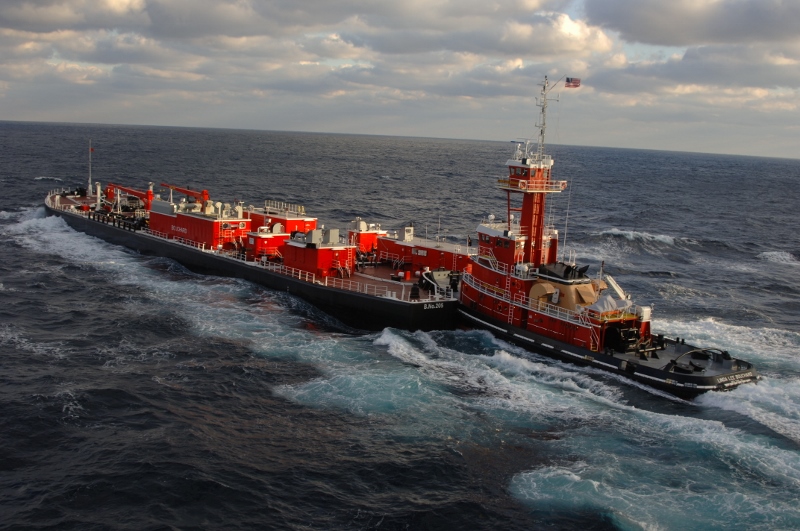There are several possible variations on the basic 180° Crazy Ivan maneuver.
One day I was watching what is now essentially an extinct species: a big Bouchard Transportation conventional tug was rounding up on a huge light oil barge in New York Harbor off the Colgate Clock, in what I would describe as an exceptionally lethargic manner.
Crazy Ivans, as a rule, are usually pretty dynamic and exciting. In high winds, towing an empty, the pucker factor can be very high. But in this case the environmental conditions were unusually benign and insignificant for the location. Not a breath of wind and dead-slack water off the Battery at Manhattan Island’s southern tip.
So, it all came down to the maneuvering of the big, heavy seagoing tug relative to the inertia of the towed barge, along with the effects of the short tow wire between them as the strain on it is reduced (and then almost eliminated) during the turn.
The tug, which had just rounded the Battery from the East River, slowed to bare steerageway in the mouth of the Hudson River as it steadied up on the Colgate Clock on the New Jersey side. The barge followed, also slowing. Then the captain began a series of in-and-outs: taking the engines out of gear, then repeatedly clutching them back in for a few seconds, and back out again as the barge slowly closed on them from astern.
This slowed everything even more, as did the drag of the tow wire, surge chain and bridles through the water as the tension came off them.
Then the captain put the rudder over. In exaggerated slow motion the two vessels closed, with the angle of the tug changing in tiny increments, bit by bit, until they were alongside each other and the lines went up. It was akin to watching an improbably mismatched couple — a hippopotamus and an elephant — gracefully slow dancing through molasses. It was a thing of beauty to watch.
Then and there I decided that I would refer to any similar version of the maneuver as a “Lazy Ivan.”





